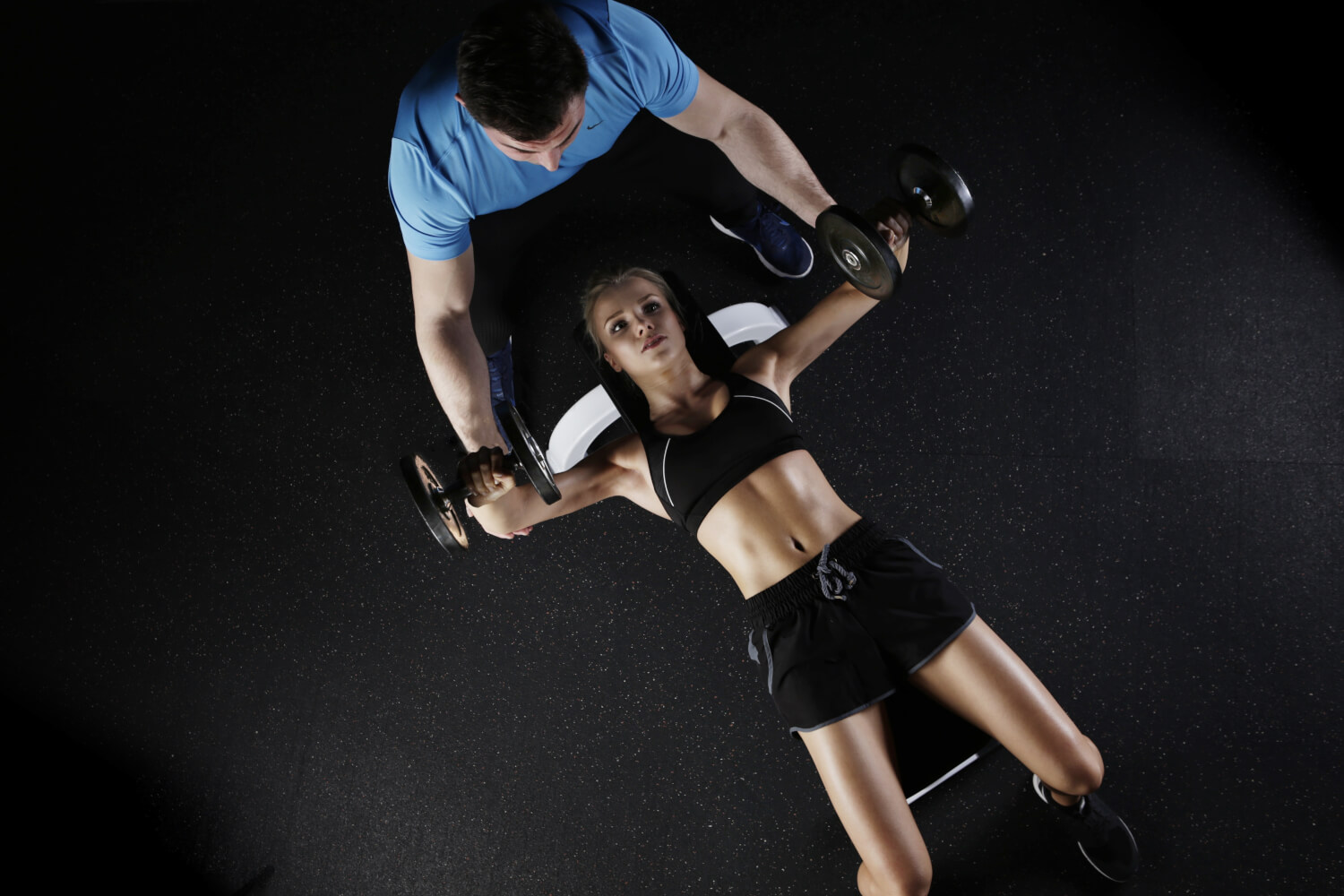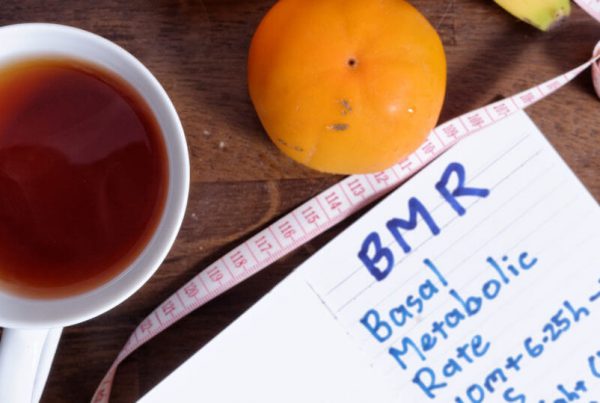Fall is already here and the holidays are just around the corner!
With an ever-growing list of things to wrap up as the year’s last quarter hurrah begins, it’s tempting to hold off on your body composition goals until the New Year.
But why wait for January when you can start making small changes towards a better body composition and reducing your body fat percentage – the real marker of positive change in your health and fitness?
The earlier you tackle your body composition goals, the sooner you can look forward to fitting in that little black dress you’ve been saving. Or transitioning from running a 10K to signing up for a marathon as a way to end the year.
As always, the first step to setting goals is to have a clear picture of where you are right now and where you want to be. Once you’ve taken a step back and considered the bigger picture, you can nail down what needs to be done (and what habits need letting go).
But in order to decide what to do and what to let go of, you need to set an achievable goal. How do you set the goal that’s right for you?
Why Focus on Setting Body Composition Goals Instead of Losing Body Weight

Why make it more complicated with all this talk about body composition goals when you can just focus on shedding the unwanted pounds, right?
Wrong. The truth is that body composition analysis is going to help you get the look you want or the results you crave because it takes into account changes in both muscle and fat. By knowing where you are right now in terms of body composition, you are most likely to achieve the results you’re aiming for.
For instance, when say you want to lose 50 pounds, you’re not really being specific enough about this goal. A pound of muscle weighs the same as a pound of fat. What if a quarter of the 50 pounds you end up losing is muscle mass? Anyone who wants to lose weight is most likely referring to losing body fat and not muscle mass.
Aiming for weight loss alone may make you look slimmer, but it doesn’t necessarily mean that you’re healthier. Also, you are less likely to have sufficient strength and stamina to push yourself further physically and mentally.
Instead of setting vague weight loss goals, you can be healthier and more physically (and mentally) fit by focusing on long-term fat loss. Building or maintaining lean muscle mass while losing fat mass means lowering your maintaining your body fat percentage within a range you set for yourself.
Let’s take a look at the following five body fat percentage ranges below, including their benefits and potential drawbacks (if any), to better help you understand your current body composition state so you can determine for yourself the goal that’s right for you.
Obese: >25% (Men); >32% (Women)
Physical appearance:
Men and women who fall in this body fat percentage category are obese and more likely to have rounder body shapes. Excess fat will be present in the entire body— often concentrated in the abdominal area, thighs, and hips.
In many men, most of the fat is obvious in the abdominal area, often leading to the appearance of an increasingly protruding belly. Meanwhile, body fat tends to accumulate in the hips and thighs in women. Muffin tops, love handles, and moderate to severe appearance of cellulite is more common in women.
Possible health benefits/advantages:
None.
Possible health issues and struggles:
Individuals within this range of body fat percentage have an increased risk of metabolic or cardiovascular disease. Obesity is also linked to poor self-esteem as well as low energy levels.
Body composition goals to focus on:
If you fall within this body fat percentage category, an effective strategy is to begin losing fat first, while preserving existing Lean Body Mass. People with high body fat percentages tend to have a lot of existing muscle – developed naturally to allow body movement – and preserving this should be a priority. More muscle means a larger metabolism and more strength, which you’ll want to preserve as you lose body fat.
To start losing body fat, consume less processed foods and reduce your caloric intake. You can experiment with different types of diets and begin planning for regular physical activity. One study revealed that obese adults can quickly improve their body composition through the following:
- Reduce daily calorie intake by 500-1000 calories
- Consume a low-fat (20-25% of calories) and moderately high protein (20-25% of calories) diet
- Aerobic training 3 to 5 times a week, plus resistance exercise 2 days a week
2. “Overfat” 20-25% (Men); 28-32% (Women)
Physical appearance:
You can’t always tell if you’re overfat by appearance alone, or even by using a scale. That’s why we refer to this body fat percentage as “overfat” instead of “overweight.” Why?
Men and women who fall within this body fat percentage range may not have as much excess body weight as those in the obese category, but still have excess body fat. While it is true that some overfat people will appear so if they are also overweight, it’s also possible to have a normal or average body weight but still have too much body fat. That’s a condition called sarcopenic obesity, what you may know as “skinny fat.”
For men who are overweight as well as overfat, most of the fat is obvious in the abdominal area (beer gut/spare tire/pot belly). There is little to zero muscle definition.
For women, body fat tends to accumulate in the hips, buttocks, and thighs. Muffin tops, love handles, and slight to moderate appearance of cellulite may be visible as well.
Possible health benefits/advantages:
None.
Possible health issues and struggles:
Overfat individuals are more likely to suffer from certain health conditions. Like their obese counterparts, possible issues include low energy levels, higher risk of metabolic syndrome and cardiovascular disease, poor self-esteem due to physical appearance, and a shortened life expectancy.
People who are skinny fat are also particularly vulnerable to health problems because they have similar body compositions as people who are overweight, but may have very few visual indicators that can warn them of their health risks.
Body composition goals to focus on:
This depends on whether you’re skinny fat or not.
If you’re overweight and overfat, the recommendations for you are similar to that for someone who is obese – work on reducing Fat Mass while preserving Lean Body Mass while you do it.
The first step is to reduce your caloric intake by changing your diet. You can experiment with different types of diets and begin a consistent exercise regimen. Building the habit of getting enough sleep should also be a priority.
However, if you’re skinny fat, depending on your existing muscle mass, you may opt to work on gaining Lean Body Mass first. You may be able to accomplish losing fat AND gaining muscle because:
- If you increase your muscle mass, you will increase your Basal Metabolic Rate (i.e. your metabolism) and if you don’t add any extra calories to your diet, you may lose body fat while you build muscle.
- The effort you put into lifting weights can increase your Total Daily Energy Expenditure, causing you to burn more calories.
Studies have shown that for people in the “overfat” category range, circuit training is one effective option for improving changes in body composition while not making significant changes in overall body weight. That means muscle gains and fat losses are happening at the same time.
3. Average Fitness: 15-20% (Men); 23-28% (Women)
Physical Appearance:
Men in this body fat percentage category are often described as moderately lean and fit. While muscle definition may not be obvious, outlines and striations may slightly appear. A bit of vascularity may be present in the arms.
For women, this category is neither slim nor overweight. With more body fat around the thighs and buttocks, curves will begin to form in the hips.
Both men and women may have some muscular definition but it may take on a softer appearance. Off-seasoned athletes typically fall in this category.
Possible health benefits/advantages:
People in this category typically enjoy high energy levels, better sleep, and good overall health. They may also look good in tight fitting clothes which in turn leads to better self-esteem. Health issues due to excess body fat are less likely to occur.
Possible health issues and struggles:
Despite general good health, it is easy for individuals with an average body fat percentage to fall into bad fitness and health habits due to the lack of adherence to a strict regimen.
Body composition goals to focus on:
Since this considered a healthy range to be in, slight tweaks to your existing fitness and eating habits may prove to be helpful. As a whole, build habits that are geared towards gaining Lean Body Mass.
Focus more on eating less processed carbs and aim for a slightly higher protein intake after resistance training sessions.
4. “Athletic” Fitness: 10-15% (Men); 18-23% (Women)
Physical appearance:
Men and women who fall in this body fat percentage category have the classic beach body look. They are lean, muscular, and clearly fit. There is little fat to pinch and muscle definition is particularly obvious in the shoulders, arms, and abs. Professional athletes may fall in this category, especially those who move a lot in their sport, like basketball and soccer players.
Vascularity may appear in the arms but it may not as pronounced in the legs among men. Women with this body fat percentage may have fat in the arms and legs but it’s not as obvious than those with higher body fat percentages.
Possible benefits/advantages:
Besides looking really fit, folks with this body fat percentage tend to enjoy excellent overall health and well-being. There are less cravings due to regular physical activity and strict adherence to a diet that works for them.
Possible health issues and struggles:
Reaching and maintaining a body fat percentage around this range will take work and will require thorough meal planning, lots of attention to diet, nutrition, and an exercise regimen that takes precedence over other activities.
You may have to give up certain sweets, alcohol, and frequent attendance to social gatherings so you can catch up on sleep and eat less junk.
Body composition goals to focus on:
If your body fat percentage already falls in this category and you still want to improve your body composition, consider hiring a nutrition and fitness coach to be within this range consistently.
5. Exceptional Fitness /“Bodybuilder” Range: 3-10% (Men); 12-18% (Women)
Physical appearance:
This body fat percentage category often includes bodybuilding competitors and fitness models. Muscle definition is high in both men and women because there is very little fat at this stage. Bodybuilders, for instance, may aim for the extreme low end of this range on days when they are competing because in order to have a competitive look, they require next to no body fat.
In men, veins may start appearing all over the body, including in the abdominal area. Women in this category may not look as lean as their male counterparts due to the higher percentages of body fat, but will still look incredibly lean, but not necessarily bulky: a common fear many women have when they consider improving their body compositions.
Possible benefits/advantages:
One’s appearance may be a great source of confidence for both men and women. Overall health may be good if diet is mainly composed of whole foods and less junk food, especially towards the upper end of this range. Increased energy levels due to regular exercise are also an added advantage.
Possible health issues and struggles:
This is an incredibly difficult body composition to maintain consistently over time, especially at the lower end of this range. However, this is the look you see often see in fitness magazines and on posters.
Individuals within this body fat percentage range must completely commit to way they eat and exercise. In fact, competitive female bodybuilders have been shown to share the same eating-related habits as those with bulimia. They may shun social events that involve dining out and may not have the time for other activities. Also, women in this category might notice some reproductive and fertility issues.
It’s for these reasons that bodybuilders typically work to get into this range only during competition season. Because of the extreme effort required to maintain this body composition, very few people maintain it year-round.
Body composition goals to work on:
If you’re at this level of body composition, the goal is is maintenance. Strict adherence to your diet and workout regimen is required, and there may be many tradeoffs required, such as virtually never compromising on your diet and dedicating much of your free time to your personal fitness. Although this is the look you see in fitness posters, on the whole, this body fat range may not be sustainable in the long run.
Men who have less 6 percent body fat and women with less than 16 percent body fat are typically bodybuilders on contest day or fitness models on the day of their photoshoot. Often, they have gone to great lengths such as going on a strict diet and exercise regimen for days.
How Far Do You Want to Go?

So is there an ideal body composition that you should shoot for?
Unless you’re an athlete or someone with health issues, aiming for the following healthy range is recommended:
Men: 10 to 20 percent
Women: 18 to 28 percent
Also, consider the following when setting a body composition goal:
- Your ideal body composition depends on your current health status as well as the sport or activity that you’re training for. A female marathoner’s idea of what’s appropriate for her is way different from a stay-at-home-mom.
- Humans are hardwired to have differing degrees of perception. What looks perfectly okay to someone else may appear unacceptable to you. In a study among college males, it was found that men have varying definitions of the ideal body composition. The same goes for women, whose ideal body shape has evolved over decades.
- The amount of time you’re willing to dedicate to get into a specific body fat percentage category can also influence the way you set your body composition goal. This can take a lot longer than may think, especially if your goal is to have a really low PBF. For example, in a 12-month case study, it took a bodybuilder in his mid-20s 6 months to go from 14.8 percent to 4.5 percent body fat.
- Sticking to body composition goals involves oodles of persistence and self-discipline. Know what you’re getting yourself into. Want to look like a bodybuilder all the time? You’ll have to center your life around that. For some, that’s ok. For others, the sacrifices required to maintain this body composition are too much.
- Don’t forget to get some rest. The the quality and length of your sleep is critical for helping you make changes in your body composition. Not getting enough sleep can mess with your hunger levels, lessen the release of Growth Hormone, and promote cortisol – a hormone that discourages muscle growth
What Truly Matters
Everything we’ve discussed in this article are useful guidelines to help you set body composition goals. You can also benefit from working with a fitness and nutrition coach, but you are the best person to set goals for yourself. After all, no one knows yourself better than you.
Eventually, it all boils down to what you’re willing to do (and let go of), the specific improvements you want to see, and how far your body and mind can go.
But before you do anything, you need to know where you’re currently at. That means getting your body composition tested. With your body composition results in hand, you’ll be able to set smart goals and create habits that will help you achieve lasting success and enjoy the process along the way.
***
Kyjean Tomboc is a nurse turned freelance healthcare copywriter and UX researcher. After experimenting with going paleo and vegetarian, she realized that it all boils down to eating real food.









